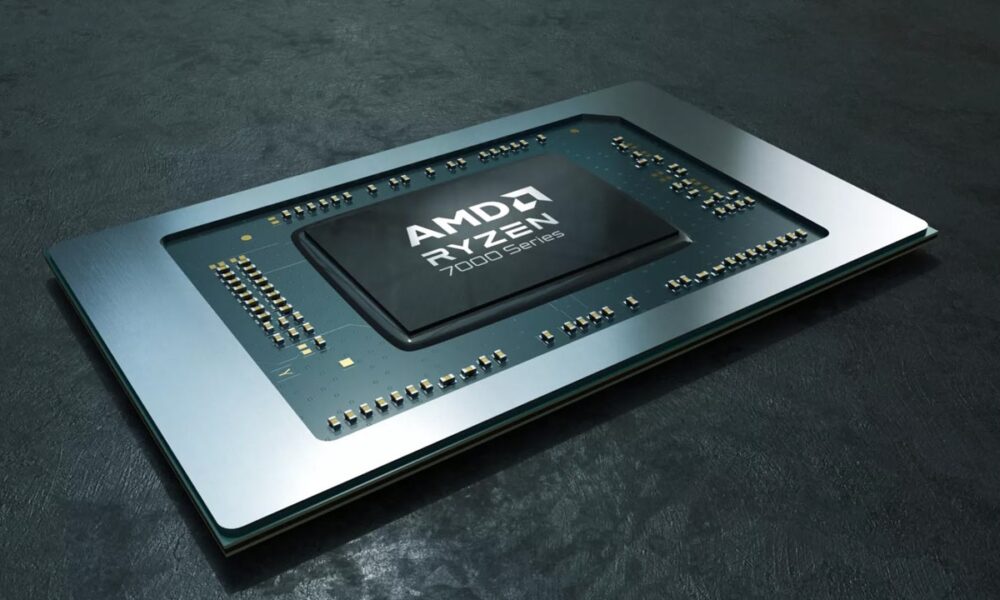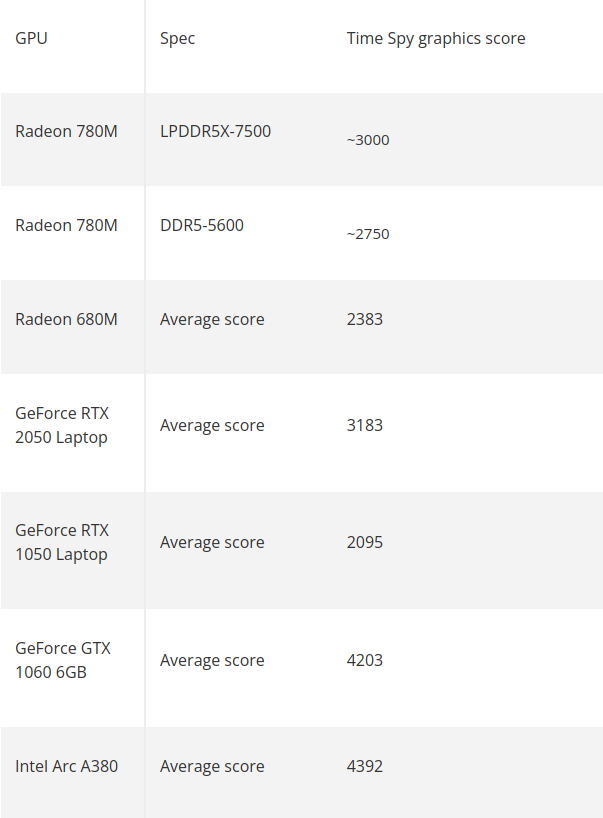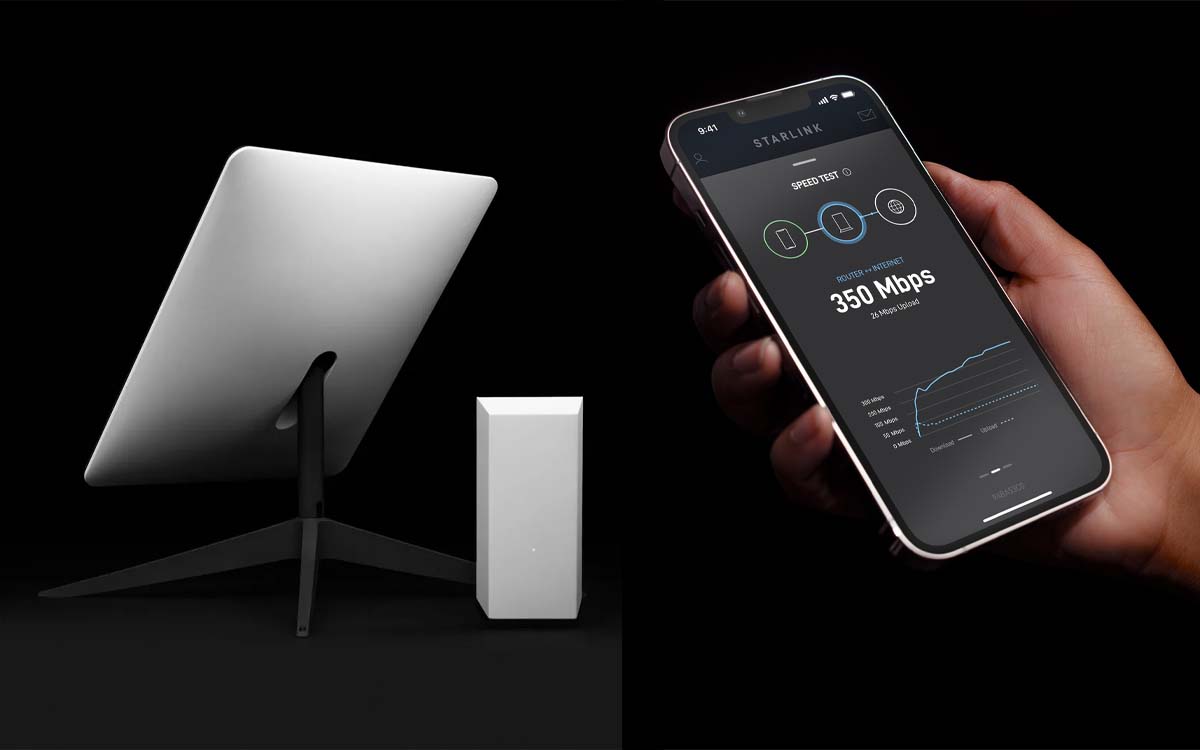
RDNA 3 It hasn’t gotten off to a great start with the Radeon RX 7900 XT and RX 7900 XTX graphics cards, however, the architecture could have redemption with the AMD Radeon 780Man integrated graphics processor for Ryzen CPUs that aims to significantly improve the performance currently offered by the Steam Deck, Valve’s console/mini-PC.
The AMD Radeon 780M integrated graphics has been revealed on a technology forum of Chinese origin called Bilibili. There a user has published some presumed performance tests made with 3DMark Time Spy on the aforementioned integrated graphics, with a result that, according to the version of the user who has published the data, supposes a 25% improvement compared to the Radeon 680M, which uses the RDNA 2 architecture, and gets closer to the laptop-oriented variant of NVIDIA’s GeForce RTX 2050.
The Radeon 780M was presented at CES 2023 along with the Radeon 760M, its more modest sister. The first will be configured with 768 shaders, 48 texturing units, 32 raster units, 12 ray tracing acceleration units, and 24 artificial intelligence acceleration units. The second will have 384 shaders, 24 texturing units, 16 raster units, 6 ray tracing acceleration units and 12 intelligence acceleration units. Neither will have a level 3 cache.
When it comes to performance tests, forum user Bilibili has shown a score of 3,000 with 7,500MHz LPDDR5X RAM and 2,750 with 5600MHz DDR5 memory. With these results, at Tom’s Hardware they have decided to make a comparison with graphics models that have already been marketed, which include the integrated Radeon 680M and some dedicated ones, including the aforementioned RTX 2050 for laptops.
The Radeon 780M, as an integrated graphics card, does not have dedicated memory, so it supports that function in the computer’s RAM. On the other hand, and according to PC Gamer, the integrated graphics of the Steam Deck, based on the RDNA 2 architecture, yielded a result of 1,700 points at the time, so the latest generation integrated graphics aims to significantly outperform the mini-PC from Valve, which is obviously limited by its design and layout.
However, some suspect the veracity of the alleged tests for a very obvious reason: the fact that the results are too round. It is argued that the results could be a guess rather than the real thing, and it should also be noted that the results of a synthetic test do not necessarily represent good performance or a good experience in a real-world environment, which remains in evidence with the highest score obtained by the Intel Arc A380.
We’ll see what performance the AMD Radeon 780M really ends up offering, but if it more or less meets the expectations around it, that would pretty much confirm the existence of a Steam Deck 2 that aims to be necessary for Valve’s device. can follow the slipstream in terms of system requirements, even if it is at the cost of sacrificing to a great extent graphic quality and using FidelityFX Super Resolution, a rescaling technology whose third version will rely on artificial intelligence to improve the final result.
Another point to keep in mind is that the power offered by the AMD Radeon 780M does not have to carry over to the presumed Steam Deck 2 if Valve decides to use said integrated GPU.




